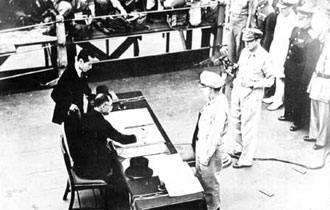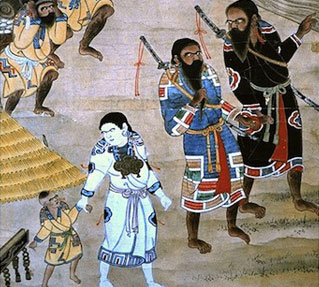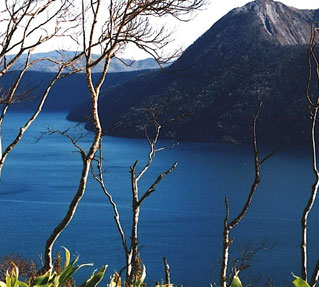Pages |
There exists, however, an extremely appealing record of those interwar years, captured in a set of one hundred woodblock prints of the "new" city by a group of eight young artists. These prints chronicle the buoyant urban atmosphere of the period, the sense of the happiness which the inhabitants of Tokyo felt in being up-to-date and modern, in a way that no photographic record can accomplish. These prints really capture the spirit of the time when Tokyo-before the rising of militarism in the 1930s-revealed a carefree spirit that showed in turn a fresh energy, a belief in progress, and a sense of the possibilities for personal excitement and fulfillment.
Edo, later Tokyo, was always a prime spot for visitors from around the country, and woodblock prints by such famous nineteenth-century Edo artists as Hokusai (1760-1849) and Hiroshige (1797-1858) provided striking views of the shogun's capital. With the coming of the West, despite all the changes this contact brought to Japanese culture, traditional printmaking did manage to continue, and many of the subjects chosen by these artists continued to show a nostalgic regard for the beauties of the capital. Such prints continued to be executed in the traditional manner. The original drawing was created by a particular artist, who then gave his design to be cut on blocks, to be printed by professionals and marketed through a publishing company.
This type of print, based on traditional methods of production, are referred to as shin-hanga (literally "new prints"). Prints such as those of Kawase Hasui's "Iwasaki Garden" and Kasamatsu Shirō's "Spring Night: Ginza" indicate the way in which these artists viewed the changing urban environment of Tokyo.
Along with this traditional approach, a new and altogether fresh method of printmaking emerged. These prints were made directly by the artists themselves. Many of these printmakers had been trained in Western-style oil painting. They saw themselves not as craftsmen but as creative painters and designers, and indeed some of them were among the most gifted artistic personalities of their generation. In their minds, they were artists who happened to make prints. These men made their own designs, then carved and usually printed their own blocks. Their work is classified as belonging to the sōsaku hanga or "creative print" movement. For them, prints served as an authentic means to reflect their direct and personal artistic expression.
A group of these "creative print" artists, who had collaborated informally on several occasions, now began in the 1920s to hold join exhibitions and publish a small magazine devoted to the emerging art of the creative print. These various activities eventually resulted in the creation and publication of a joint project, "One Hundred Views of New Tokyo" (Shin Tōkyō Hyakkei), published on a subscription basis between 1929 and 1932. Fifty sets were made. The Carnegie Museum of Art of Pittsburgh owns a full set, numbered No. 31, one of the few complete runs of the prints available in the United States or elsewhere. Thanks to the generosity of the museum, these striking and evocative prints are shown here.
This was a young men's project, filled with the artistic vitality of those who enjoyed the new energy of the city in its latest transformation. Many, such as the famous novelist Nagai Kafū (1879-1959), mourned the passing of the old, as did such "new print" artists as Itō Shinsui (1898-1972), whose nostalgic works are full of a more traditional atmosphere. Among the prints in the New Tokyo series, however, there is little in the way of any visual nostalgia for the loss of Edo. Rather, as was the case in so many cities around the world, it was the new, the modern, and the progressive that were to be showcased.
Pages |











